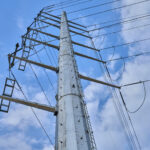We expect renewable project installations to gather a momentum by end of FY21. says, Hardik Shah, Associate Director – Corporate Ratings, Care Ratings
Post trade restriction with China, what are the challenges facing the solar sector in India?
India’s total renewable power generation capacity stood at around 90 GW as on October 31, 2020, and India has set a target of achieving 175 GW of Renewable power generation capacity by March 2022. In order to achieve this target, solar power capacity addition is one of the most critical elements as there are subdued capacity additions of wind power over the last three years, and pipeline of wind power projects also stood low at around 10 GW. There is around 46 GW of solar power capacity which is under implementation and another around 22 GW is expected to be auctioned shortly. India has meagre capacity of domestic manufacturing of solar modules, and more so, solar cells are being largely imported. Also, cost of domestic manufacturing of solar modules is high when compared to imports. Thus, currently more than 85% of solar cells and modules being installed in India are imported from China and Malaysia. Accordingly, any disturbance in the imports of solar cells and modules from China can have a direct impact on India’s renewable energy programme. Due to trade restriction with China, there had been heightened talks about imposition of anti-dumping duty up to around 40% on imported solar cells and modules which has, however, not fructified, and India has settled with continuation of 15% safeguard duty on import of solar cells and modules till June 2021. Accordingly, it has been largely business as usual for solar sector in India despite trade restrictions with China.
How is ‘Aatmanirbhar Bharat’ for the renewable energy sector shaping up?
Initially, India provided various capital subsidies and incentives for setting up domestic solar module and cell manufacturing capacities. However, there was lukewarm response to these initiatives mainly due to lack of clarity about commercial viability of domestic capacities due to their direct competition with highly economical large-sized manufacturing set-ups in China and ever changing technology. Accordingly, recently, SECI came out with ‘Manufacturing linked’ tenders for 12 GW of solar power capacity wherein successful bidders have committed to set-up module manufacturing capacities in India. However, beyond this, there is still not much interest in setting up domestic cell and module manufacturing as there is lack of clarity about the import duty structure. Industry is demanding medium to long-term (minimum of 5 years) clarity about import duty structure before investing heavily in India.
The Solar Power tariffs have plunged to a low of Rs. 2/kWh. How do you view this development?
Solar power tariff plunging to an all-time low of Rs.2/kWh hascome with mixed feelings. On the positive side, it will accelerate the acceptance of renewable power which has an additional feature of avoiding the adverse impact of climate change. Also, low tariff augurs well for the consumers as well as ailing state power distribution entities which are unable to fully recover their power purchase cost from the consumers. However, such a low tariff would have far reaching implications on India’s energy sector. Such a low tariff shows a sense of desperation among the players which would eliminate small to medium players from the sector. Also, in the past, we have seen cancellation of around 8 GW of bided solar power capacity mainly on the back of declining tariffs. The difference between the lowest tariff arrived in SECI’s November 2020 auction and other auctions held from April 2020 onwards is as high as Rs.1/kWh which could propel cancellation of some of the auctions. Also, with the declining tariff scenario, state power distribution utilities could refrain from new tenders in near future in anticipation of further low tariffs which in turn could result in delays in achieving the set target of renewable power generation capacity in India. Furthermore, viability of the projects for next 25 years at such a low tariff would also be critical and any unforeseen rise in their project cost and interest rates along-with lower than anticipated power generation from their projects could result in an unviable proposition.
Will India hit the target to produce 175 GW of renewable energy by 2022. Your views
As per our view, it is unlikely for India to achieve 175 GW of renewable power capacity by end FY22. After witnessing highest ever solar capacity additions in FY18 at 9.36 GW, solar capacity additions were low at 6.53 GW in FY19 and 6.45 GW in FY20. The performance on Wind side is even poorer with less than 2 GW annual capacity additions in the last three years ended FY20. Hydro capacity additions are impacted mainly due to various implementation, environmental and policy-related challenges. On the back of this, there is the black swan event of Covid-19 pandemic which has disrupted the project implementation schedules and still the pandemic has not subsided. In our view, looking at the good pipeline of Solar power projects and expected auction of further solar capacity before end of FY21, India could reach near to a level of around 120 GW of renewable capacity by end FY22. Also, in order to achieve this level of renewable capacity, it would depend on the pandemic situation in times to come along-with timely auction of further solar capacity.
What has been the impact of Covid-19 on the renewable energy sector, especially the solar industry?
Impact of Covid-19 on the solar industry could be divided in two parts, viz.,impact on under-implementation project and operational projects. Due to Covid-19-induced lockdown and supply chain disruptions as well as labour shortage, project implementations have been delayed, however, MNRE has provided 5 months’ extension in project completion timelines which is expected to help all under-implementation projects. As far as operational projects are concerned, impact of Covid-19 has been very limited as solar irradiation has not been impacted due to Covid and so does the power generation from solar projects. Additionally, amidst the pandemic, MNRE re-emphasized the ‘Must run’ status of renewable projects which has led to very limited instances of grid curtailment for renewable projects across the country. Also, MNRE directed the power distribution entities to continue regular payment to renewable projects which has resulted in largely stable payment track record for solar projects despite Covid-19. Maximum impact of Covid-19 has been on the rooftop solar segment whereby on the back of reduction in scale of operations from industries, power demand had been on the lower side which resulted in lower power off-take and delays in the payment. Additionally, rooftop solar installations have been put on hold by many companies on the back of economic slowdown which has affected the companies engaged in rooftop solar power installations.
What is your assessment for the next financial year 2021-22?
Upon partial wash out of FY21 due to Covid-19 pandemic, we expect renewable project installations to gather a momentum by end of FY21 and India could very well see its highest ever renewable power capacity installations during FY22. Currently, around 10 GW of wind and around 46 GW of solar power projects are under implementation with another around 22 GW of solar projects expected to be auctioned shortly. Majority of these capacities are expected to be installed by FY23. However, increasingly competitive tariff structure, on-going issue of PPA renegotiations, lack of long-term clarity about duty structure for imported solar cells and modules, elevated challenges in land acquisition for renewable projects, significant dip in generation by wind power projects in current year, slow progress in rooftop solar installations and weak financial health of majority of state power sector distribution entities would be major constraining factors for India’s renewable energy programme in coming two years.
India's gigantic ambition to increase its renewable energy target to 450 GW by 2030 requires huge investment, which is not forthcoming. How can India overcome its financial constraint to achieve its renewable obligation?
Total incremental fund requirement to increase renewable energy capacity to 450 GW by 2030 could be more than Rs.15 lakh crore, which will be required to be met through a mix of debt and equity. Apart from this, new investments would also be required in enhancing existing as well as building new transmission infrastructure to absorb significant amount of renewable capacity which is expected to come online in next few years. Additionally, new technologies are being added rather than plain vanilla solar and wind project (batteries, pumped storage, hydrogen cells, etc). Implementing such a huge wind and solar capacity along with foray into new type of untested technologies in next few years provides a key challenge of arranging significant amount of funds in a timely manner.
Presently, majority of the green-field renewable energy projects in India are being funded in a conventional manner, ie, around 25% of the project cost is being funded by the promoter’s equity/private equity, and balance around 75% is being funded through a mix of debt in the form of loans from banks / IREDA / NBFCs and FIs or ECBs from international institutions. Once a project achieves CoD and has some operational track record, the conventional debt financing, in few cases, is replaced with bonds. However, these conventional means of financing would not be sufficient to support 450 GW of renewable power capacity. Accordingly, innovative financing mechanisms are required for the development of the RE sector in India.Retail participation by IPO or InvITs route, Green bods (also known as Climate bonds), Credit guarantee scheme, Securitization/ pooling of assets, Participation by suppliers / EPC contractors could potentially complement the existing means of funding RE projects in India.









